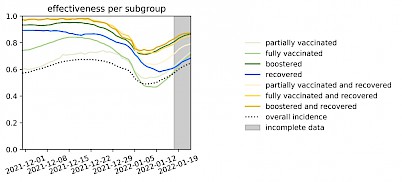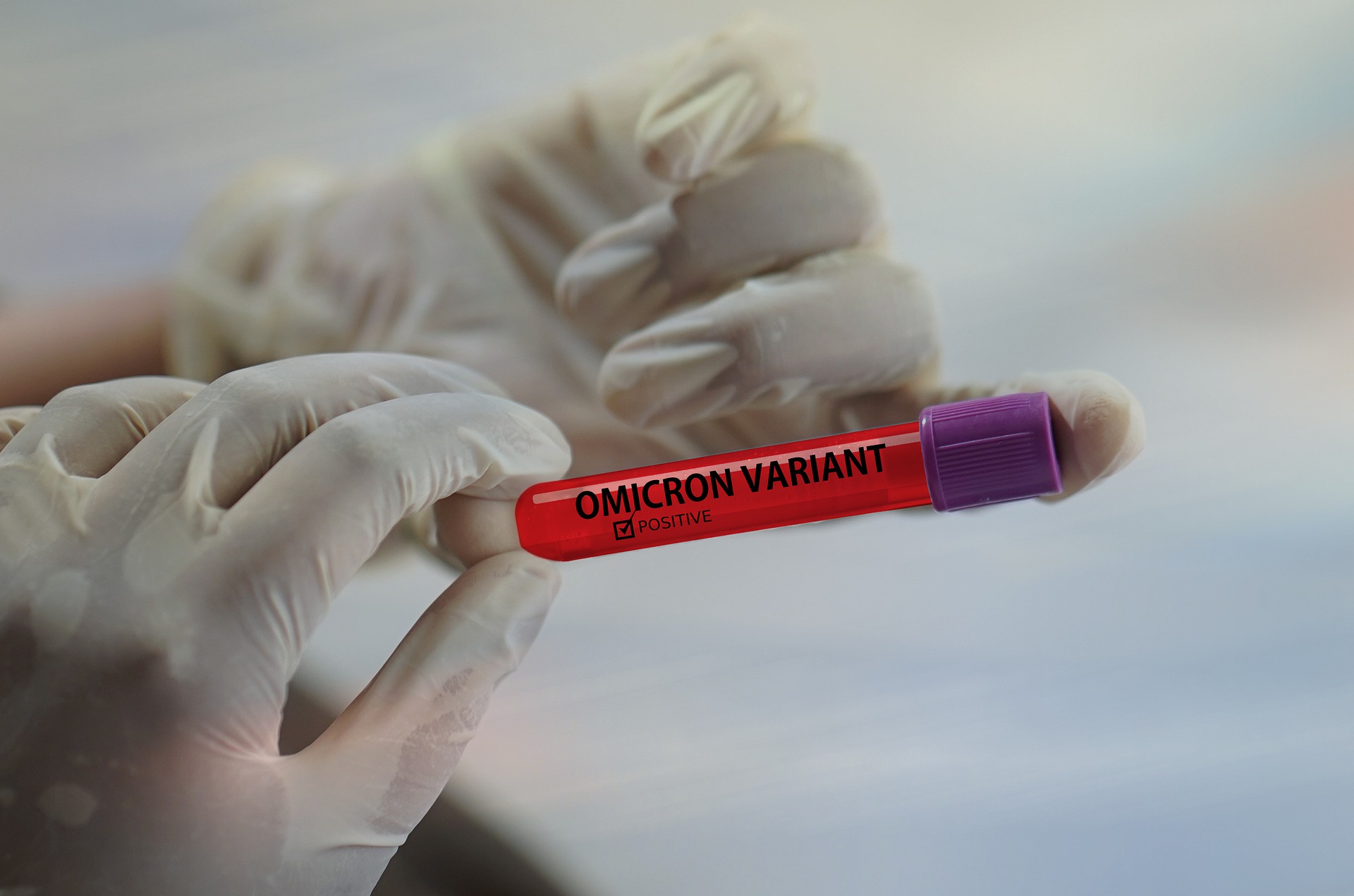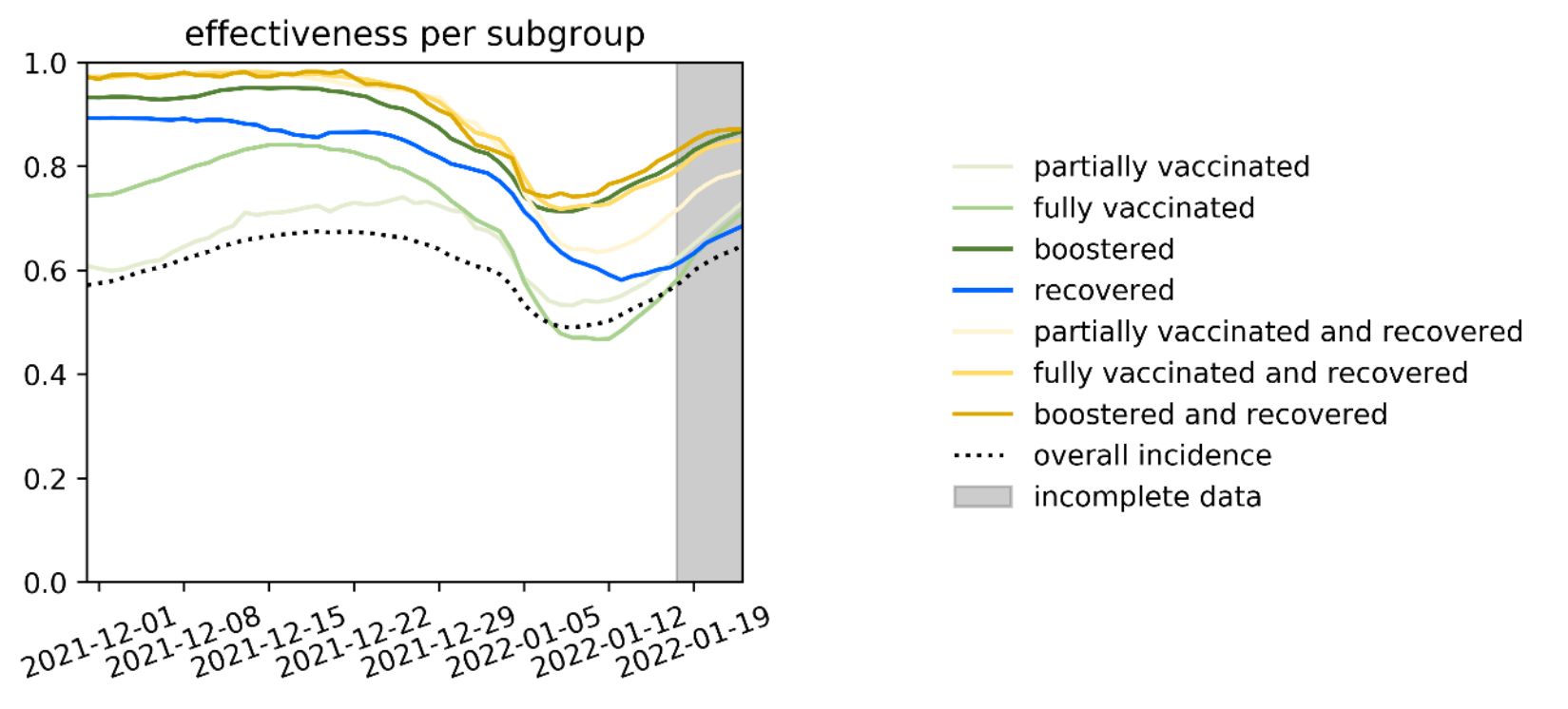2G Rule: Lower Effectiveness, but Still Reducing Infections
Calculations for Omicron show reduced effectiveness compared with Delta, implementation is key
Note: This is an automated translation (using DeepL) of the original German article.
Due to the immune escape properties of the Omikron variant, i.e. the property to bypass the immune protection, the effectiveness of vaccination and recovery in Austria has fallen. For this reason, the effectiveness of the 2G access rule was analyzed with comprehensive calculations. The complete analysis with all details can be downloaded as PDF here.

Figure 1 shows how protection decreases with increasing prevalence of the omicron variant, regardless of the type of immunization (recovered, vaccinated, multiply vaccinated, or combinations thereof). Here, for clarity, “protection of a group of persons” is defined in comparison to the “group of persons without intervention/immunization” - i.e., the unvaccinated and unrecovered.
Effectiveness of the 2G scheme.
Based on this basic information, considerations or calculations were now made regarding the effectiveness of 2G as an access condition. For this purpose, two target variables were defined:
- is analyzed by how much the 2G rule can reduce the proportion of infectious people in the settings (e.g., restaurants, culture, stores, etc.).
- it is analyzed how many infections can be avoided.
Based on the assumption that the 2G rule tends not to be 100% strictly adhered to throughout Austria, these targets were considered (in addition to the ideal case of strict adherence) in three different, less strict settings. Thus, we examined the impact of 2G being ignored by a quarter (25%), half (50%), or even three-quarters (75%) of the settings. The results are summarized in the following two tables.
| Reduction in the proportion of infectious among visitors | CW 49,2021 (predominantly delta) | CW 01,2022 (predominantly omicron) |
|---|---|---|
| Strict adherence to 2G | 69% | 27% |
| 25% of settings ignore 2G | 51% | 21% |
| 50% of settings ignore 2G | 34% | 14% |
| 75% of settings ignore 2G | 17% | 7% |
Table 1: Reduction in the proportion of infectious people entering a 2G controlled setting compared to a strategy without 2G control. The analysis compares two time periods with different prevailing variants (delta and omicron, respectively) and considers different adherence scenarios.
| reduction in average number of infections | week 49,2021 (predominantly delta) | week 01,2022 (predominantly omicron) |
|---|---|---|
| Strict adherence to 2G | 90% | 47% |
| 25% of settings ignore 2G | 68% | 36% |
| 50% of settings ignore 2G | 45% | 24% |
| 75% of settings ignore 2G | 23% | 12% |
Table 2: Reduction in the average number of infections in 2G-controlled settings compared with a strategy without 2G control. The analysis compares two time periods with different prevailing variants (delta and omicron, respectively) and considers different adherence scenarios.
Summary
In KW49, one would have found up to 69% fewer infectious and 90% fewer infections in perfectly 2G controlled settings than in non-controlled settings. In KW1 2022, these numbers reduced to 27% and 47%, respectively. This decrease is explained by the immune-escape property of the Omikron variant, which limits the advantage of the 2G rule.
In summary, although the 2G rule has lost effectiveness due to the Omikron variant, it is by no means to be classified as “ineffective” according to the data - as long as there is acceptance for compliance. This is because, particularly with regard to infection prevention, half of the effectiveness compared with delta is still given (see Table 2).

